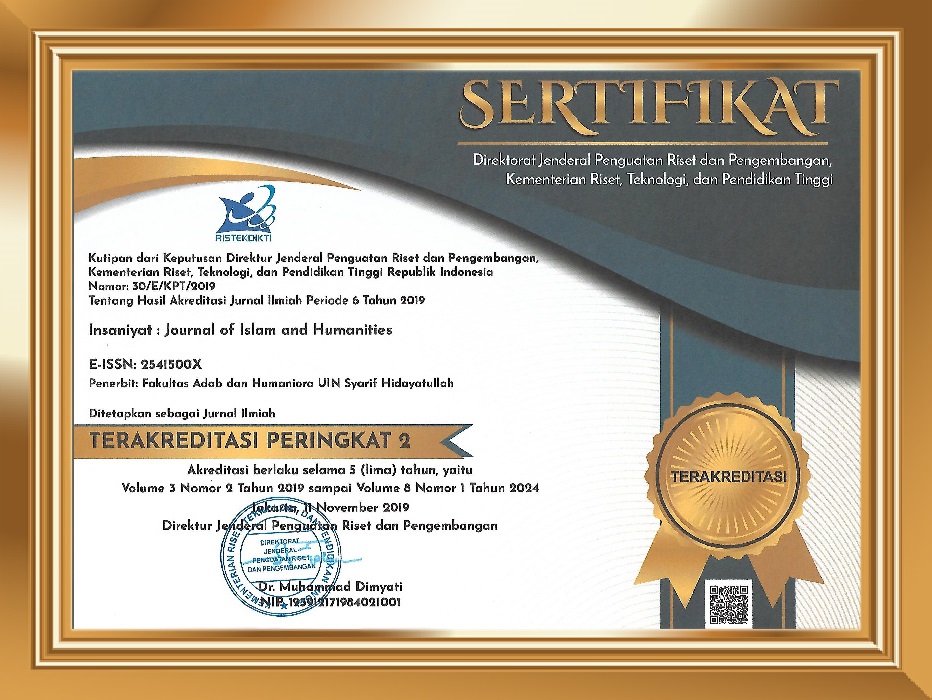Challenging the Patriarchal Norms: Examining Hegemonic Masculinity in Dickinson TV Series
Abstract
In the 19th century, hegemonic masculinity and patriarchal system were part of the society and even became the norms that people believed and obeyed. Emily Dickinson, a female character in Dickinson series, had to deal with gender discrimination practiced by the patriarchal society, specifically hegemonic masculine figure. This research aims to investigate the hegemonic masculinity experienced by the main female character in Dickinson season 1, and how she challenged the notion of hegemonic masculinity. The writer uses descriptive qualitative method as well as the theory of hegemonic masculinity by Raewyn Connell. This study found that there were various traits of hegemonic masculinity that Emily had to face from the hegemonic masculine figure, namely authority, aggression, technical competence, and subordination of women. It also showed that the character in the series tried to challenge the hegemonic masculinity performed by her hegemonic father. The acts proved that the female character put effort in fighting againts the injustice and discrimination toward her as a woman.
Keywords
References
Alamsyah, Pasaribu and Sahri, A. and Z. (2017). Potrayal of the Nineteenth Century English Women in Jane Austin’s Sense and Sensibility. Language Literacy, 1(1), 1–26.
Ali & Batool, R. & S. (2015). Stereotypical Identities: Discourse Analysis of Media Images of Women in Pakistan. Multidisciplinary Journal of Gender Studies, 4(1), 690–717.
Alsyouf, A. (2018). Hegemonic Masculinity in Archetypal African Novels. Kajian Ilmu Komunikasi, 48(2), 169–179. https://doi.org/10.21831/informasi.v48i2.21657
Andersen and Wendt, P. D. and S. (Ed.). (2015). Masculinities and the Nation in the Modern World: Between Hegemony and Marginalization. St. Martin’s Press LLC.
Aurita and Huda, N. A. and M. (2020). Hierarchy of Masculinities in George R.R. Martin’s A Game of Thrones. Science and Technology Publications, 614–621. https://doi.org/10.5220/0009913206140621
Bhat, R. A. (2015). Role of Education in the Empowerment of Women in India. Journal of Education and Practice, 6(10).
Chisamya, DeJaeghere, Kendall & Khan, G., Joan, Nancy &. Marufa Aziz. (2012). Gender and Education for All: Progress and problems in achieving gender equity. International Journal of Educational Development, 32, 743–755. https://doi.org/10.1016/j.ijedudev.2011.10.004
Connell & Messerschmidt, R. W. & James. W. (2005). Hegemonic Masculinity: Rethinking the Concept. Gender & Society, 19(6), 829–859. https://doi.org/0.1177/0891243205278639
Connell, R. W. (1995). Masculinities. University of California Press.
Connell, R. W. (2005). Masculinities (2nd ed.). University of California Press.
Corda, J. (2016). Images of Women in 20th-Century American Literature and Culture. Female emancipation and changing gender roles in The Age of Innocence, Breakfast at Tiffany’s and Sex and the City. Tectum Verlag Marburg.
Cuklanz & Erol, L. & A. (2021). The Shifting Image of Hegemonic Masculinity in Contemporary U.S. Television Series. International Journal of Communication, 15, 545–562.
Gilligan and Snider, C. and N. (2018). Why does Patriarchy Persist? Polity Press.
Klein, J. (2013). The ‘“mask of masculinity”’: Underreported Declines in Male Friendship and Happiness in the United States. Masculinities and Social Change, 2, 29–50.
Malik, Q. (2021). Representation of Hegemonic Masculinity in Pakistani TV. Journal of Media Studies, 36(1), 351–379.
Morrell, Jewkes and Lindegger, R., Rachel and Graham. (2012). Hegemonic Masculinity/Masculinities in South Africa: Culture, Power, and Gender Politics. Men and Masculinities, 15(1). https://doi.org/10.1177/1097184x12438001
Pascoe & Bridges, C. J. & T. (2016). Exploring Masculinities: Identity, Inequality, Continuity and Change. Oxford University Press.
Risman, B. J. (2017). 2016 Southern Sociological Society Presidential Address: Are millennials cracking the gender structure? Social Currents, 4(3), 208–227.
Rosen & Nofziger, N. L. & S. (2018). Boys, Bullying, and Gender Roles: How Hegemonic Masculinity Shapes Bullying Behavior. https://doi.org/10.1007/s12147-018-9226-0
Scharrer & Blackburn, E. & G. (2018). Cultivating concepts of masculinity: Television and perceptions of gender role norms. Mass Communication and Society, 21(2), 149–177.
Sink and Mastro, A. and D. (2017). Depictions of Gender on Primetime Television: A quantitative content analysis. Mass Communication & Society, 20(1), 3–22.
Sollund, R. (2020). Wildlife Crime: A Crime of Hegemonic Masculinity? Social Sciences, 9(93). https://doi.org/10.3390/socsci9060093
Sugiyono. (2013). Metode Penelitian Kuantitatif, Kualitatif, dan R&D. Alfabeta.
Yang, Y. (2020). What’s Hegemonic about Hegemonic Masculinity? Legitimation and Beyond. Sociological Theory, 1–16. https://doi.org/10.1177/0735275120960792
DOI: 10.15408/insaniyat.v7i1.26810
Refbacks
- There are currently no refbacks.






